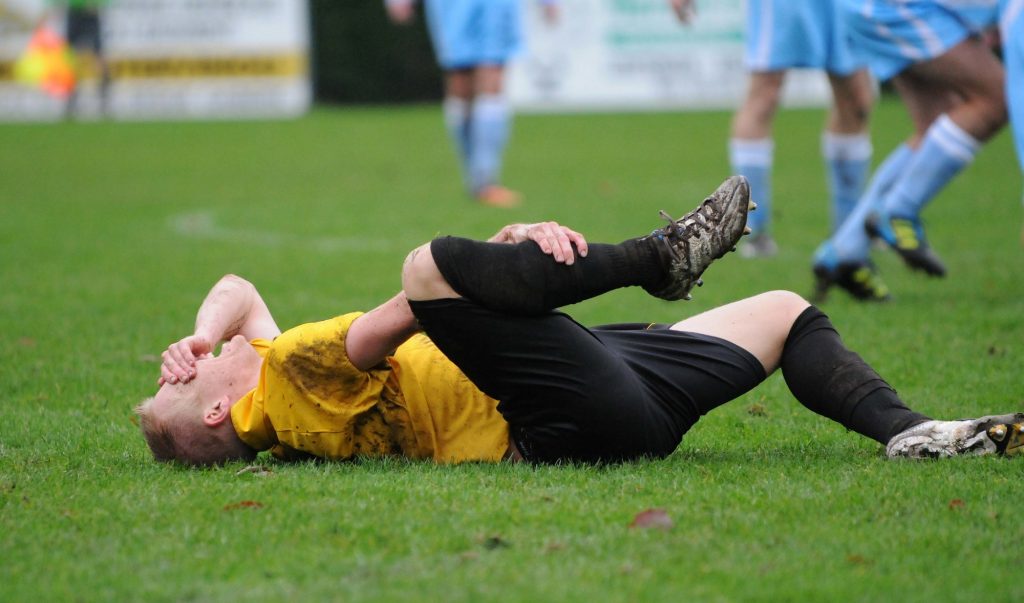Everything to Know About the Most Common Soccer Injuries

A report showed that there were 2.7 million emergency hospital visits for people who had suffered sports injuries between 2010 and 2016.
About 7.1% of these emergency visits were due to soccer injuries. Given the growing popularity of soccer, these injuries can only become more prevalent.
It is crucial to understand the most common soccer injuries if you are into this sport. Keep reading our guide to know these soccer injuries and how to prevent them.
Knee Injuries
Knee injuries for soccer players are quite common. It’s not surprising, considering that the game involves running, turning, and twisting. These activities tend to place significant pressure on the players’ knees and supporting ligaments.
If the stress is beyond what the ligament can hold, you might get a tear or sprain. The anterior cruciate ligaments at the front of the knee are more prone to injuries. Ligaments can’t retract as much as tendons and muscles, making them more vulnerable to injuries.
The knee injuries are classified from grade one to three. One can get a mild sprain, partial tear, or complete tear. You might want to check the right soccer knee brace to manage the pain after suffering these injuries.
If you experience a loud ‘pop’ from your knee when playing, there’s a likelihood you have cruciate ligament injuries. Within 24 hours of sustaining the injury, you’ll experience swelling and pain. The joint line might also experience tenderness and loss of motion.
Ankle Sprains
Ankle sprains are amongst the most common soccer injuries that you need to know. They occur when there has been a tear or stretch of the ligaments that surround the ankle joint. Twisting, turning, and forcing the ankle joint or foot beyond its normal motion range can sprain the ankle.
This form of injury varies greatly based on severity. The first grade is the minor ligament tear or stretching, where the laxity doesn’t loosen. There is some laxity in the second grade, while the third grade often involves a complete ligament tear.
Ankle sprains can make it hard for you to continue playing your favorite sport. Depending on the severity of the injury, you might need to see a doctor. However, you can handle most of the minor injuries with some basic first aid procedures.
You might want to prevent ankle injuries by stretching your ankles well before playing soccer. It would also help to work on your balance and strength training. The right shoes can also go a long way in ensuring that you’re not susceptible to ankle sprains.
Head Injuries
About 283,000 children who sought care in the emergency departments had a sports or recreation traumatic brain injury. Impact on the head is one of the leading causes of traumatic brain injury. Soccer players often experience bruises and bumps on the head and face.
Concussions are the most severe injuries as they touch on the brain. A concussion often leads to dizziness, headache, nausea, and fuzzy thinking. Players can get concussions after having a head collision with the foot, elbow, knee, and head of another player or even a goal post.
Some of the most common soccer injuries are preventable. For head injuries, you can do your part by limiting the amount of scrimmaging and heading when in practice. It would also help to know the players around you, especially the opponents playing recklessly.
More importantly, consider wearing protective clothing such as soccer headgear to prevent head injuries. If you’re into heading the ball, do so with your forehead. You might also want to chuck in your chin as you ensure that your neck is rigid to avert cases of whiplash effect, causing neck and head injuries.
Hamstring Injuries
Soccer is one of the sports that involve a lot of powerful accelerations, decelerations, and running. These activities are the leading cause of hamstring injuries. The hamstring refers to a group of tendons and muscles extending from the pelvis bone, shinbone to the back of your leg.
Hamstrings help to rotate the lower leg and to bend your knees. A hamstring injury occurs when you have a torn or stretched tendon or muscle. You can experience a pulled hamstring, a less severe strain, or a hamstring tear, which is more serious.
If you experience a sudden, sharp pain on the backside of your thigh, that’s a hamstring injury. An untreated strain or tear can worsen, leading to a chronic hamstring injury. These injuries often manifest in the form of tightness, tenderness, and spasms.
Some soccer injury prevention tactics that apply to the most common soccer injuries can prevent a hamstring injury. Consider warm-up before playing soccer and a gradual increase in the intensity of your workouts.
Dermal Injuries
Dermal injuries are prevalent in sports, usually in the form of cuts and bruises.
Cuts and bruises can occur anywhere on the body after a wrong heading or a collision with another player. One might also hit a goal post leading to cuts and other types of bruises.
Dermal injuries are common in soccer, and it’s almost impossible to prevent them fully. However, you might need to take precautions when interacting with other players on the playground.
The Most Common Soccer Injuries Are Preventable
Soccer is a fast-paced sport, which increases the likelihood of injuries among players. It is crucial to understand some of the most common soccer injuries and how you can protect yourself. From knee injuries to head injuries, these accidents can warrant one to visit the emergency department.
It is critical to work on your physical fitness and other exercises that strengthen your muscles for great leg, knees, and ankles support. Wear protective clothing such as shin guards and headgear. You’ll save yourself from unexpected blows!
Our site is all about sports. If you’re a sports enthusiast, the range of articles on hockey, extreme sports, martial arts, and football will interest you.







